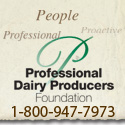Ag Fertilizer Prices Hit Hard Due to Tariffs
By: Ryan Hanrahan, University of Illinois' FarmDoc project - 08/25/2025
Politico Pro's Rachel Shin reported that "farm groups are warning that President Donald Trump's tariff war is worsening already high fertilizer prices, making it harder for farmers to afford planting their usual amounts of corn, wheat and soybeans."
"Agriculture industry representatives have been hesitant to publicly criticize Trump's tariff policies. But some of them have spent the last few months quietly lobbying Republican lawmakers and administration officials to help ease the impact on fertilizer, which can
account for more than 30 percent of row crop farmers' input costs," Shin reported. "The National Corn Growers Association and 25 state corn grower groups sent a letter earlier this month to U.S. Trade Representative Jamieson Greer, Commerce Secretary
Howard Lutnick and Agriculture Secretary Brooke Rollins asking for action to lower fertilizer prices, which they say are 'approaching disastrous levels.'"
"'Unfortunately, the combination of the low corn prices, trade uncertainty, and consistently high costs for fertilizers and inputs, including relevant countervailing duties, have resulted in a calamitous environment for farmers who are trying to plan for harvest and
next season,'" the groups wrote," according to Shin's reporting.
Brownfield Ag News' Jared White reported that farm management specialist at the University of Illinois Gary Schnitkey "says fertilizer costs are putting a squeeze on farmers planning for 2026. Gary Schnitkey says the elevated prices, primarily resulting from
several global supply challenges, are outpacing stagnant commodity prices."
"'And as we look at nitrogen fertilizer, if anything, it's gone up in recent months.' He says, 'It's 10 to 15% higher than last year's levels. That's pretty high relative to the price of corn that we're looking at today,'" White reported. "He says it could result in some
farmers cutting back fertility budgets, or potentially planting more soybeans if demand picks up."
Tariff Rates Now Particularly High on Herbicides, Insecticides and other Pesticides
Agri-Pulse's Oliver Ward reported that "as the dust begins to settle on new tariff rates and industries parse through how the duties will affect their sectors, some widely used agricultural inputs seem particularly exposed to the tariff hikes while impacts on
agri-food imports have been more muted."
"The average effective tariff rate across all inputs jumped from just 0.9% when Trump took office in January to 12.2% today. But some widely-used farm inputs, including pesticides, have seen steeper tariff hikes," Ward reported. "The average effective tariff
rate applied to herbicides, insecticides and other pesticides is now 20% or higher. Tractors and other ag machinery and parts saw average effective tariff rates hiked from zero -- or close to -- to 16% and 13%, respectively. Phosphate and nitrogen enjoyed
tariff-free trade before Trump took office but are now subject to average effective rates near 10%."
"'A lot of these tariffs are really only now starting to kick in,' Shawn Arita, an associate professor at NDSU and one of the study's authors, told Agri-Pulse. As a result, it is still not clear whether, or by how much, the tariffs will be passed along to consumers,"
Ward reported. "So far, U.S. consumer price inflation has stayed below 3% over the last year. But Arita said that price hikes on agricultural inputs could still materialize."
Tariff Exemptions Help Insulate Some Agri-Food Products
"While tariffs on specific agri-food products - including coffee from Brazil - have faced sharp increases since Trump took office, imported food overall has been insulated from tariff hikes by the president's web of exemptions, according to researchers at North
Dakota State University," Ward reported. "Trump's decision to exempt products covered under the U.S.-Mexico-Canada Agreement from tariffs blunted some of the biggest impacts for food importers. The U.S. imports around 43% of its agri-food products
from Mexico and Canada, but much of that is covered by the USMCA."
"A further 17% of U.S. agri-food imports come from the EU, which now faces a tariff cap of 15%. Many food products the U.S. buys from the EU, like wines and cheeses, already faced high duties and have seen only small bumps to bring them up to the 15%
cap," Ward reported. "Even Brazil, recently hit with new 40% duties in addition to its 10% baseline duty, saw a raft of food and drink products spared when the administration exempted some 700 products."
"Before Trump began his second term, U.S. agri-food imports faced an average tariff rate of 4% -- once adjusted for the trade volumes from each trading partner," Ward reported. "They now face an average tariff rate of 15%, the study finds."
- AFBF Study: Farmers Urgently Need Economic Assistance
- U.S. Soybeans Set for First Chinese Shipment Since May
- Cranberry Production Forecast to Land Near Five-Year Average
- Tyson Foods to Close Nebraska Beef Processing Plant
- Deere Reports Lower Sales, Net Income During 2025
- Ag Secretary Leads Largest USDA Trade Mission to Mexico
- Land O'Lakes, Microsoft Working to Accelerate AI in Agriculture



